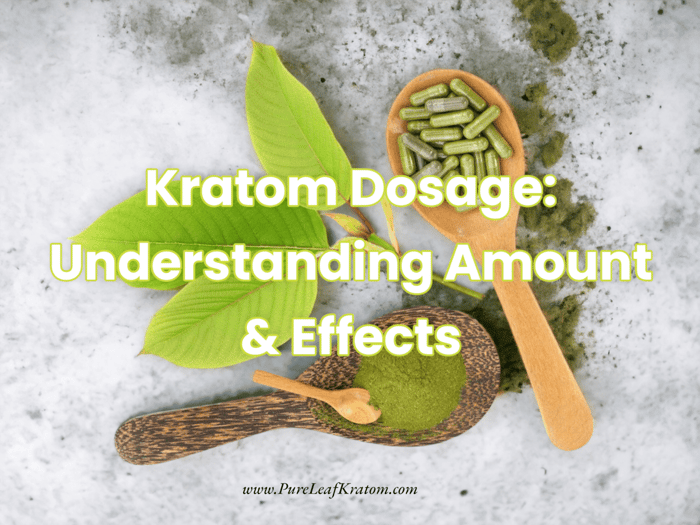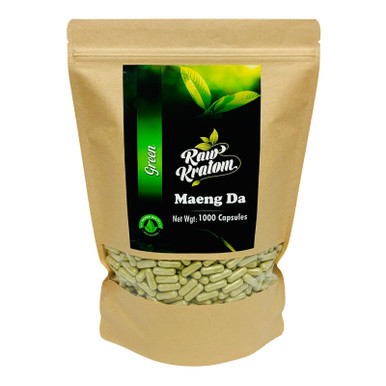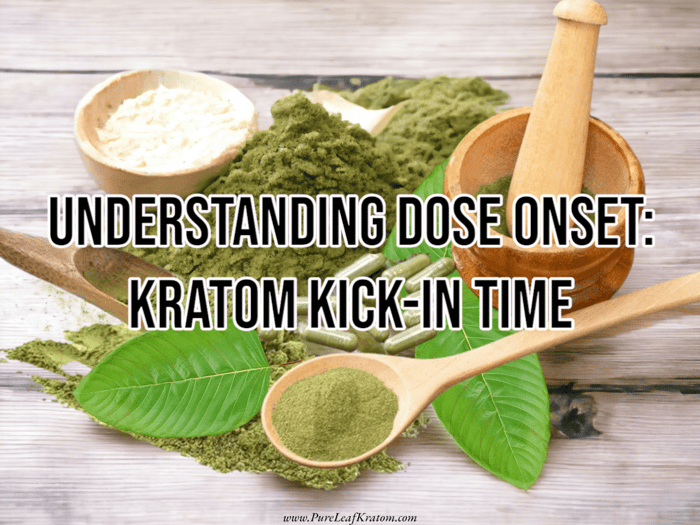
Unveiling the Kratom Dosage Conundrum: How Much Is Just Right?
Unveiling the Enigma of Kratom: An Introduction
There's been a surge of interest recently in the world of Kratom, an intriguing herb native to Southeast Asia. Known by its scientific name, Mitragyna speciosa, Kratom leaves have been chewed or brewed into tea by people in Thailand, Indonesia, and Malaysia for its interesting effects. The key to optimal Kratom use, however, lies in understanding the art and science of Kratom dosage.
In its essence, Kratom can be a double-edged sword. When used appropriately, it can serve as an efficient tool for pain management, mood enhancement, and even recreational activities. Botch the dosage, however, and you may find yourself facing unpleasant side effects. This comprehensive guide aims to help you navigate the intricacies of Kratom dosage, ensuring safe and enjoyable use.
Unraveling the Distinct Applications of Kratom
Tracing the Roots: Origin and History of Kratom
Mitragyna Speciosa, or as we commonly know it, Kratom, originated from the dense forests of Southeast Asia, particularly in nations like Thailand, Indonesia, and Malaysia. Traditionally, it was a staple for farm laborers who chewed the leaves for its stimulating effects and to combat fatigue. Over time, the herb gradually spread throughout the world as its multifaceted uses started to gain recognition.
Medicinal and Recreational Significance of Kratom
Whether you seek it out for its potential analgesic properties or you're interested in its mood-enhancing effects, Kratom can cater to a range of needs. In lower dosages, Kratom leaves can have an effect similar to stimulants, while in larger doses, it might act as a sedative. Significantly, the right dosage is crucial in determining the outcome, and this is what this article attempts to tackle.
In the souring arena of pain management, Kratom enters as a promising contender. With properties reportedly similar to opioids, it's often used by individuals suffering chronic pain. Furthermore, Kratom has also claimed its space in the realm of mood enhancement. By acting on opioid receptors in the brain, it can trigger euphoria and provide relief from anxiety and depression.
While its medicinal use is gaining momentum, there's no overlooking the recreational significance of Kratom. Enjoyed in social settings for its euphoria-triggering properties, it constitutes a pivotal part of culture and gatherings in Southeast Asia. Once again, determining the ideal dosage is essential to obtain the desired recreational effects without unintentional mishaps.
Kratomade Kratom Extract Drink Mix Cherry Pomegranate 100mg

$9.59
Kratomade Kratom Extract Drink Mix Cherry Pomegranate 100mg Introducing Kratomade Kratom Extract Drink Mix in the tantalizing Cherry Pomegranate flavor, a unique and flavorful way...… read more
Understanding Kratom and Its Multifaceted Usage
Kratom, scientifically known as Mitragyna speciosa, is a tropical plant native to Southeast Asia. Over centuries, it has fostered a rich history of cultural and medicinal usage, with a recent surge in recreational interest.
Tracing the Origin and History of Kratom
The geographical origin of Kratom traces back to the lush forests of Southeast Asia. It has been appreciated there for millennia for its medicinal and recreational properties. Rural folk have used the leaves for self-treatment of various common medical issues such as diabetes, diarrhea, fever, and pain." Additionally, Kratom became popular among manual laborers who chewed the leaves or brewed them in tea to combat fatigue, improve productivity, and experience increased energy and euphoria.
However, despite its ancestral roots and widespread traditional use, Kratom is officially banned in some Southeast Asian countries. In recent years, Kratom has gained increasing popularity in Western countries, often being sold illegally via online shops for its psychedelic and dissociative effects.
An in-depth understanding of Kratom's medicinal and recreational usage
Kratom and Pain Management
Current research reinforces the traditional use of Kratom for pain management. Studies show that alkaloids in Kratom, notably mitragynine, can provide potential benefits for treating acute and chronic pain. The only randomized controlled trial to date has preliminarily confirmed kratom's analgesic effects. Yet, it's essential to note that while Kratom's potential in pain management is promising, further research is needed to validate its efficacy and safety.
Kratom as a Mood Enhancer
Kratom has been identified as a potential mood enhancer, with qualities that may help treat mood disorders. Its main alkaloid, mitragynine, has been associated with possessing antidepressant and anxiolytic effects, which could be beneficial for individuals dealing with mood swings or mental health disorders. It's noteworthy that while there is strong anecdotal evidence and initial preclinical data supporting Kratom's mood-enhancing effects, more rigorous clinical trials are required to consolidate these findings.
Kratom and its recreational significance
Kratom's psychostimulant properties have been leveraged for recreational use. It's known to induce a state of increased energy and euphoria, making it popular among users seeking a natural stimulant or mood enhancer. However, there are safety concerns surrounding its recreational use, as it has been associated with potential side effects like seizures, addiction, psychosis, liver injury, and even death when mixed with other substances. Hence, safe and responsible use of Kratom dosage is strongly advised.
Exploring the Different Varieties of Kratom Strains
Kratom dosage is not a one-size-fits-all substance. Different strains have their own set of unique traits that influence the effects an individual experiences. This range of effects can make it a powerful tool, but it can also create a complex conundrum for the new user: Which strain best suits their needs and how do they navigate the Kratom dosage spectrum?
Understanding Different Strains of Kratom and Their Unique Traits
Red Strain
Among the various strains of Kratom, the red vein is often recognized for its pain relief and relaxation capabilities. While the recommended dosage ranges from 2-8 grams per day, it's crucial to start low and observe how your body responds before you consider increasing the amount. This strain is known for its sedating effects, making it suitable for individuals wanting a calming sensation or relief from physical discomfort.
Green Strain
The green vein Kratom offers a middle ground between the red and white strains. It is dubbed as the 'moderate stimulant,' ideal for those seeking gentle energization and stress relief without the less sedating effects of its red counterpart. Despite user reports differentiating strains, many scientific studies highlight similar alkaloid content across strains. However, individuals may still experience unique effects due to other unexamined compounds, the product's overall quality or even placebo effects derived from marketing claims.
White Strain
For users looking for a more pronounced stimulation and focus, white vein Kratom strains may serve best. They potentially contain a high mitragynine level, making this strain stimulating and suitable for focus tasks. Although 3-10 grams is the recommended dosage, always start at lower amounts, considering individual variation in sensitivity and response.
Correlation Between Kratom Vein Colors and Effects
Strain color in Kratom is determined by the vein color of the plant it was harvested from. Environmental factors, farming, and preparation significantly influence the alkaloid profile and potency of these different Kratom strains, correlating to the distinct effects experienced by users.
White and Green strains typically have greater mitragynine content, which interacts with opioid receptors, leading to a stimulating effect on the central nervous system. However, the Red vein strains contain a higher 7-hydroxymitragynine level, promoting more opioid-like and sedating properties than the other strains.
It's important to remember, these effects are subjective, and a single strain's impact may vary among individuals. Effects can range anywhere from relaxation to euphoria, depending on the dosage and the individual's body chemistry. Hence, personal experimentation and cautious usage are essential in finding the right dosage and strain that best suits one's needs.
Krave Kratom Capsules Red Vein

$9.89
Krave Kratom Capsules Red Vein Red Vein Kratom strains are celebrated by Kratom enthusiasts for their distinctive maturity and potent properties. Within the world of...… read more
Navigating the Right Kratom Dosage (Beginner, Moderate, Heavy)
Kratom dosage is a delicate component of consumption as it can significantly impact individuals' experiences. It is largely influenced by different factors such as the specific strain of kratom, its potency, the individual's tolerance, body weight, metabolism, and the desired effects. Understanding and mastering your personalized dosage can make a significant difference in your kratom journey.
Comprehensive Guide to Understanding Kratom Dose Interpretation
Dose by Weight
While it can be a useful guideline, kratom dosage does not operate on a one-size-fits-all basis. It is essential to consider one's body weight and build when determining the appropriate Kratom dosage. As a rule of thumb, those who are heavier may require a higher Kratom dosage compared to lighter individuals to achieve similar effects.
Dose by Desired Effects
Another critical aspect to consider is the intensity of the desired outcomes. Different kratom dosage can translate into varying effects on the user. A lower kratom dosage may bring about mild stimulation, while a higher dosage may lead to sedation and euphoria. As is with prescription drugs, it is safer to start with smaller amounts and gradually increase the dose. Notably, the impact of kratom duration and effects can change significantly based on the dosage implemented.
Rules to Follow for Beginner, Moderate, and Heavy Dosage of Kratom
For beginners, starting with a low dose of approximately 1-2 grams is often recommended. It allows newcomers to monitor potential effects and their body's tolerance to Kratom. Once users understand how their bodies respond to Kratom, they can gradually increase the dosage to moderate (3-5 grams) or heavy (5-8 grams) amounts based on their tolerance and desired effects. However, users should note the concept of "less is more." Basically, this means that taking less Kratom can often result in more beneficial and desired effects, and it reduces the risk of unwanted side effects. High doses above the recommended limit increase the risk of experiencing nausea, constipation, and other negative side effects.
Measure Kratom Dosage Correctly
Ensuring accurate dosage requires correct measurement. For precision, it's advisable to use a digital scale. However, if not available, a teaspoon can be a more accessible alternative, where a full, level teaspoon typically equates to approximately 4-5 grams of Kratom. This method isn’t as accurate, so use it with caution. Always remember, the goal is to promote a safe and responsible Kratom consumption experience.
Conclusively, Kratom dosage is a subjective and personal phenomenon. The desired effects, the individual's state of health, and their body chemistry play major roles in determining the right dosage. Always remember to start slow and low, increase gradually, and listen to your body to avoid any potential adverse effects. Furthermore, consult healthcare professionals when necessary, especially for individuals on any form of medication.
The Importance of Kratom Potentiators and Tolerance Breaks
Those delving into the world of Kratom are likely to encounter concepts such as 'tolerance breaks' and 'potentiators.' These terms may seem technical, but playing an integral role in Kratom usage, they're crucial for understanding how to optimize Kratom effects and keep tolerance levels in check.
Understanding Tolerance Breaks in Kratom Usage
As with many substances, consistent use of Kratom over time may lead to the development of tolerance, meaning the user may require increasing amounts of Kratom to achieve the same effects. However, this escalation can be risky, particularly for those attempting to cease opioid misuse. Rapid tolerance escalation may heighten the risk of relapse or concurrent misuse, endangering the user's health1.
The Role of Tolerance Breaks
This is where the concept of a 'tolerance break' or 't-break' steps in. A tolerance break is a period of intentional abstinence from Kratom, designed to give the body time to reset its internal receptors, and thus, increase the substance's effectiveness when use is resumed2. Though the frequency and duration of tolerance breaks may vary depending upon factors like personal health, usage history, and psychology, they are typically beneficial in both maintaining Kratom's effectiveness and mitigating risks associated with escalating doses.
A Deep Dive into Kratom Potentiators
Kratom potentiators are substances that, when taken alongside Kratom, can enhance its effects, improving potency, increasing the duration of effects, or speeding up the onset of these effects3. They work by inhibiting certain enzymes in the body that metabolise kratom's active alkaloids, thus allowing these alkaloids to exert their effects more effectively.
Common Kratom Potentiators
Some of the common potentiators include grapefruit juice, watercress, and CBD oil— all of which inhibit the CYP450 enzyme that metabolises many substances, including Kratom's primary alkaloids. Other potentiators, like black pepper and cat's claw, can also increase the alkaloids’ bioavailability, or result in alkaloids similar to Kratom, respectively, amplifying their overall effects3.
How Potentiators Enhance the Effects of Kratom
Potentiators don’t simply emphasize kratom's effects; they adjust the effect profile based on their own properties. For instance, potentiators like grapefruit juice may heighten Kratom’s relaxation qualities, while others like black pepper might enhance vitality and focus3. However, potentiators should be used judiciously as they can influence not only the intensity but also the duration of these effects. As such, understanding their function is vital for those keen to explore the fascinating and nuanced world of Kratom.
Understanding the Scope of Kratom Based on Dosage
Discovering the right Kratom dosage is a journey that involves a careful calibration of multiple factors. As with many herbs and supplements, the intensity and range of Kratom's effects can be profoundly influenced by the dose consumed. Regular users often notice that the experiences and effects of Kratom transform dramatically as they alter their dosage parameters.
Comprehensive Explanation of Kratom Effects Based on Dosage
One of the inherent complexities of Kratom lies in the nuanced way its effects shift and evolve based on dosage. Broadly, the impacts of Kratom encapsulate a range of experiences from stimulation to sedation, with the possibility of therapeutic benefits like pain relief and euphoria.
Analysis of Dose-Related Pain Relief
Studies indicate that Kratom contains alkaloids that act as opioid receptor agonists, reducing pain and causing stimulant effects at lower doses. This effect is equally applicable across the spectrum of strain colors: green vein, red vein, and white vein source. Regardless of the strain, precision in dosage is critical for effective pain relief. Particularly for those seeking analgesia from ailments like chronic pain, a moderate dose is often recommended.
How Dosage Influences Euphoria
Kratom is also noted for inducing a state of euphoria, mostly associated with moderate to heavy dose. This means individuals seeking this effect often need to operate within a higher dosage parameter. As this inches closer to heavy dose territory, it's essential to remember the possibility of amplifying side effects and the risk for developing tolerance.
Sedative Aspects of Higher Doses
Kratom at higher doses (ranging from 5-15 grams) displays a starkly contrasting effect profile that veers towards sedation. For many, such doses can mimic an opioid overdose, necessitating careful monitoring of ingestion source. This sedative aspect can be therapeutically useful for individuals seeking aid with sleep disturbances, but the heavy dose required underscores the importance of vigilance, proper guidance, and a deep comprehension of the extract being used.
Examination of the Relationship Between Dosage and Intensity of Effects
The Kratom journey can be as diverse as its users, shaped by a constellation of personal factors such as body weight, metabolism, and desired effects. Whether one is seeking stimulation, pain relief, or sedation, the intensity of Kratom's effects is dose-dependent. Users often start with a beginner dose, progressively transitioning to a moderate dose, and finally to a heavy dose, balancing the desired effects with potential side effects and tolerance risks. This segregation doesn't just reflect an increase in the quantity consumed; it marks a distinct shift in Kratom's nature, from a mildly stimulating substance at lower doses to a potent sedative at higher doses source.
Mastering the art and science of effective Kratom dosage is an endeavor that emphasizes the importance of mindfulness, research, and personal reflection. As always, engaging with Kratom responsibly, armed with accurate information and respect for the plant's inherent power, is the key to embarking on a fruitful exploration.
Raw Kratom Capsules Green Maeng Da

$69.95
Raw Kratom Capsules Green Maeng Da Raw Kratom Capsules Green Maeng Da showcase the genuine essence of Southeast Asian harvested kratom leaf powder in its...… read more
Practicing Safety: Vital Precactions and Safety Measures for Kratom Consumption
Being an informed Kratom user means acknowledging the potential risks involved in its consumption. Therefore, it's crucial to consider certain precautions and safety measures, especially for new users and those with underlying health disorders. The following section outlines specific precautions and safety guidelines for Kratom usage.
Essential Precautions Before Using Kratom
Before embarking on your Kratom journey, make yourself aware of a few essential precautions. The sheer variety in strain colors, like red vein, green vein, or white vein, means that Kratom has varying effects that need different dosage guidelines. Keep in mind a beginner dose may greatly differ from a moderate or heavy dose.
Understanding Contradictions
It is important to be aware of the potential interactions between Kratom and other medications that are metabolized by the liver, including modafinil, quetiapine, sedatives, naltrexone, and venlafaxine. Individuals with liver disorders, brain disorders, anxiety, depression, and addiction are also advised to use Kratom with caution due to potential risks.
Prevention of Misuse
Kratom should be used responsibly to prevent misuse and possible addiction. Regularly consuming high doses can lead to serious side effects such as seizures, psychosis, and potential opioid withdrawal. It is recommended to start with a low dose and gradually increase based on your body's response. Additionally, be aware of the possibility of contamination in Kratom products in the market, and opt for vendors that follow good manufacturing practices (GMP).
Significant Safety Guidelines for Kratom Usage
The following safety guidelines should be followed while consuming Kratom to ensure your experiences remain both enjoyable and safe.
The Importance of Hydration
Proper hydration is essential during Kratom consumption as some side effects such as constipation, nausea, and vomiting might increase your body's demand for fluids. Moreover, staying hydrated may help reduce certain side effects related to Kratom usage.
Risk of Dependency and Addiction
While low to moderate doses of Kratom can provide analgesic effects and potentially other benefits, there is a risk of dependency and addiction, especially with long-term use. As per the FDA's warning, cases of Kratom use disorders have been observed when taken for a prolonged period or in higher quantities than intended. Tread cautiously with Kratom usage and seek medical supervision when necessary.
The world of Kratom, with its variety of strain colors and potential effects, is an intriguing one, but all these factors mean that you must use it responsibly with adequate precautions. Use this guide to ensure your Kratom journey is a safe and rewarding one.
Potential Side Effects of Kratom and Who is Most at Risk
Kratom, despite its many uses, can also have several side effects, particularly when abused or used in high doses. These can be broadly classified into short-term and long-term side effects.
Short-Term Side Effects
Short-term side effects of Kratom typically show up soon after its use and can range from mild to severe. Some common short-term side effects include nausea, vomiting, constipation and diarrhea source. Other side effects can be neurological, such as seizures and headaches, or cardiovascular, like a prolonged QT interval and tachycardia source. Additionally, some users may experience irritability and other changes in mood source.
Long-Term Side Effects
Long-term use of Kratom can produce some serious health effects. Heavy usage has been linked with liver or kidney damage source. Cases of cholestatic hepatitis, psychosis, seizures, and withdrawal symptoms have been reported in chronic Kratom users source. Moreover, long-term use can also result in dependency and addiction, requiring professional intervention and treatment.
Detailed Guide on How to Mitigate These Side Effects
Although side effects can occur with Kratom use, they can often be managed or mitigated altogether by implementing certain strategies.
Adjustments in Dosage
Adjusting the Kratom dosage can be an effective way to manage side effects. If a user experiences adverse effects, decreasing the dosage or taking a break altogether may help balance out the body's response to the substance, reducing the severity or frequency of side effects. It is advisable to start with a beginner dose and gradually increase, depending on the body's reaction. Remember the rule - start low and go slow!
Alternating Strains
Another potential strategy to mitigate side effects is alternating between Kratom strains. Each strain can induce different effects due to their unique alkaloid profiles. By alternating strains, users can reduce the risk of developing tolerance or dependence on a specific strain, which can also lessen the chances of encountering side effects. However, such a measure should be taken with caution, and it's generally recommended to consult a healthcare professional before making significant changes to a Kratom regimen.



